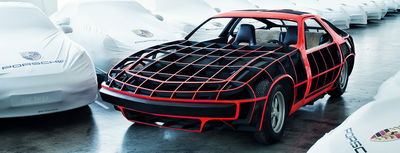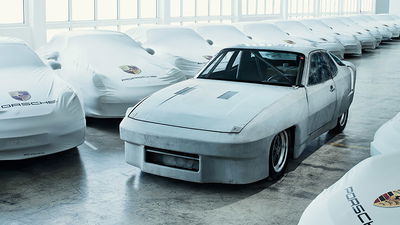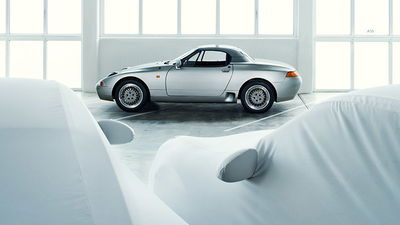These Are The Top Secret Porsches That Influenced The Iconic Super Sports Cars We Know Today

From 17 September 2014 to 11 January 2015, the Porsche Museum will fling its doors open and present ‘Project: Secret!’ The display will show off a number of never-finished design studies, unknown concept cars and camouflaged prototypes made by the German manufacturer.
The display is a part of Porsche’s commitment to creating functioning prototypes in an age when computer modelling can quickly test a number of theories, without a physical model ever needing to be made.
Uwe Schneider, head of overall vehicle development, testing, and quality at Porsche, says that despite the fact a simulation can create near-infinite variables from just one ‘digital’ prototype, a human’s ‘gut feeling’ is always important in a sports car:
“At the end of the day, you have to experience that sports-car feeling…You have to sit in the prototypes to know and experience whether the functions and the aesthetics work.”
14 cars are going on display in the exhibition; here are four very interesting examples:
Porsche 924

The 924 saw action for about a year from 1976, and was built to break Mercedes-Benz’s high speed endurance record. The standard car sported a 123bhp turbocharged four-pot, but with a target average speed in excess of 155mph over a distance of 10,000 miles, this 924 got a little optimisation.
The engine was uprated to 247bhp, while the exterior received an aerodynamic makeover. Thanks to a tonne of wind tunnel testing, the drag coefficient was dropped to just Cd 0.268 (a modern Prius is only slightly more aerodynamic), which enabled a top speed of 174mph.
Unfortunately, it never got to go for the record. Shortly before the 924 rolled around Nardo’s high speed oval, Porsche got wind of Merc’s attempts to break its own record, and shelved the project.
Porsche 984

This small two-seater concept was built following a development job with Seat. The brief was to create a compact, lightweight and aerodynamic roadster that would gain its sporting credentials through ‘low driving resistance rather than massive engine power.’
By making it less expensive to run, Porsche hoped to appeal to a younger audience. This concept featured a rear-mounted 2.0-litre four-cylinder boxer engine making 118-148bhp. There were big plans for the little sports car, with an innovative folding hard-top and all-wheel drive racing version envisaged.
The project began in 1984, but was cancelled after the dollar plummeted in 1987, triggering a sales crisis.
Concept Car Type 995

The Type 995 was a research car, commissioned by the Federal Ministry of Research and Technology, in 1978. The development team used a Porsche 928 as the technological base for the concept, and worked to create a car with excellent fuel economy, safety and noise emissions.
Some of the car’s special features included an electronically-controlled five-speed double-clutch transmission, which featured no-lift shifts. Two low-consumption petrol engines were planned: a high compression 3.0-litre V8 with automatic cylinder deactivation, and a 2.2-litre four-valve, four-cylinder.
Combined with the lightweight, aerodynamic aluminium body, consumption was calculated at 31mpg.
Porsche 959 (C29)

This concept is the basis for one of the most famous Porsches in history. The C29 aerodynamics study was an early concept in the ‘Group B’ project that spawned the ballistic Porsche 959.
The concept underwent intense wind tunnel testing in 1982, resulting in a drag coefficient of Cd 0.31, as well as an ‘optimal’ lift coefficient. Its special characteristics included a rear wing integrated into the bodyshell, a smooth transition from the windscreen to the A-pillar, as well as an aerodynamic plastic underbody cover.
The production version featured a 444bhp boxer engine with water-cooled cylinder heads and bi-turbo sequential charging, helping it easily break through 186mph.














Comments
No comments found.